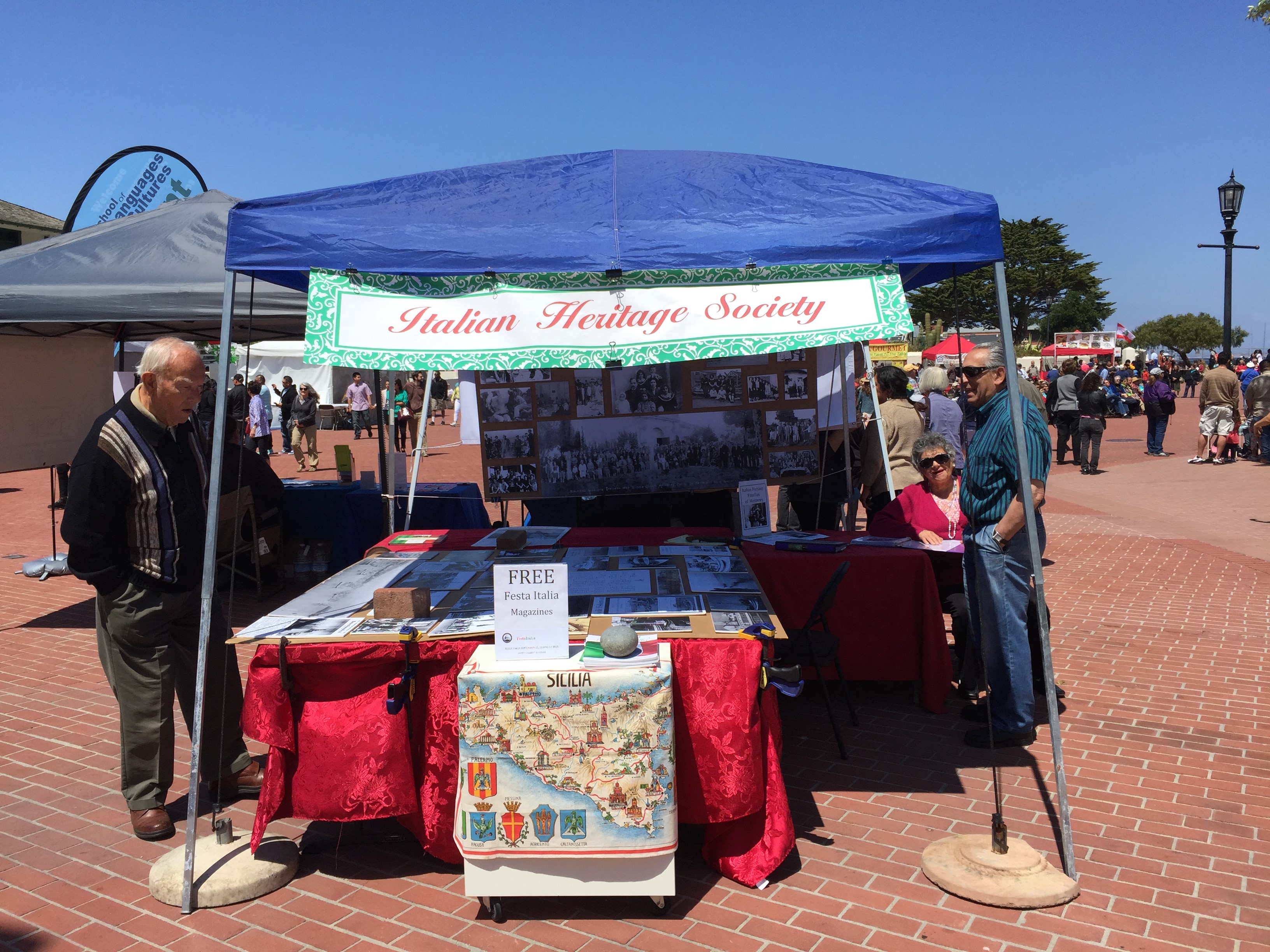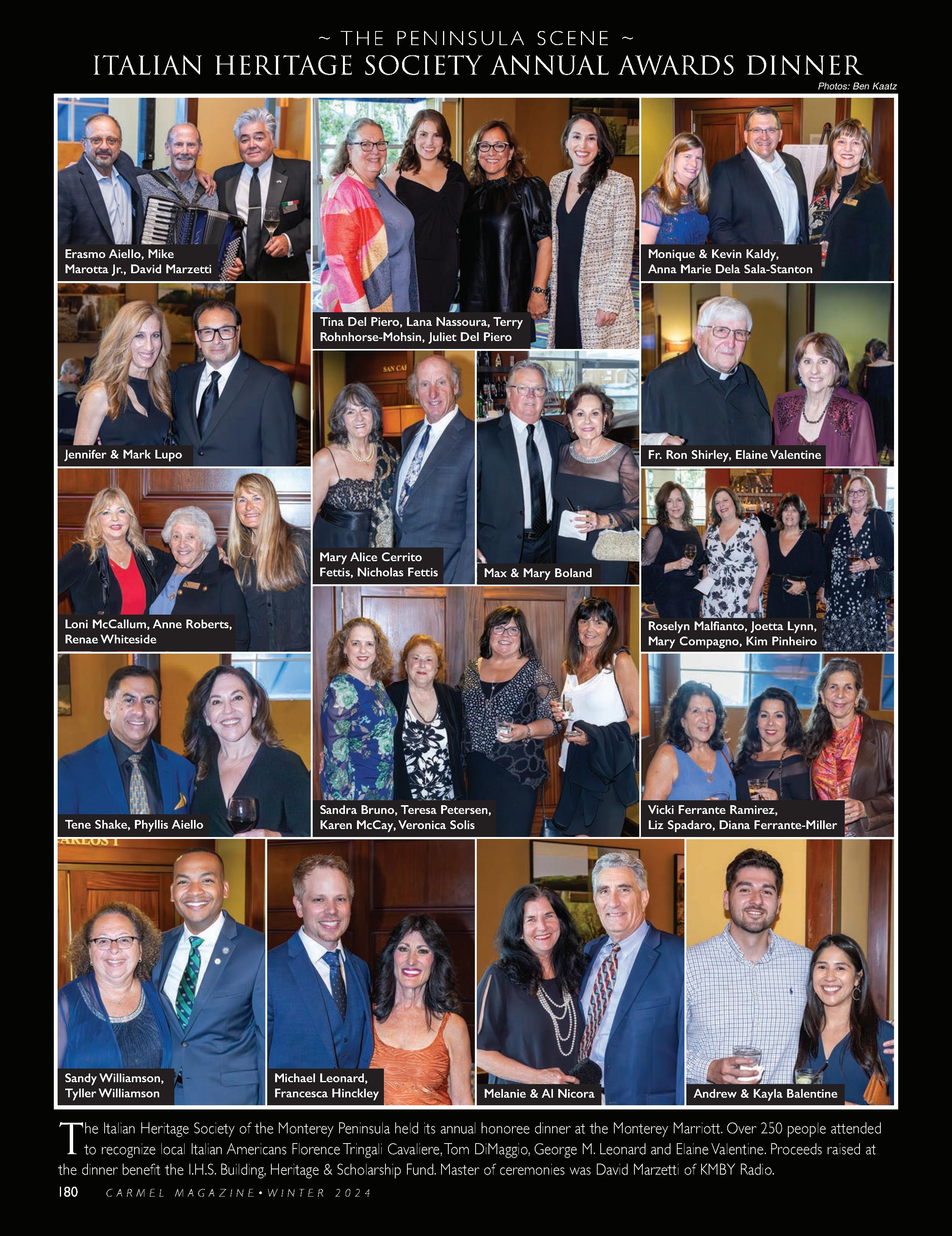
Known for its now-defunct sardine canneries that inspired John Steinbeck's Cannery Row, Monterey, California, has a rich history as a fishing community. Communities have fished the area for thousands of years, with contributions spanning from indigenous communities to Portuguese, Chinese, Japanese, and Italian (primarily Sicilian) fishermen. The latter of whom are celebrated by the Italian Heritage Society of the Monterey Peninsula.
Founded in 1975 and currently led by President AnnaMarie Della Sala Stanton, the organization aims to honor and preserve the stories, traditions, and culture of Italian families who immigrated to the Monterey Peninsula and Central Coast of California more than a century ago.
The Italian Heritage Society has published three books celebrating local Italian American history, culture, and community contributions: Italian Fishing Families of Monterey, Italian Fishing Families of Monterey (second edition), and Italian Americans—We Don't Just Fish!
Since 2002, the organization has recognized notable individuals connected to Monterey's Italian Community at its annual Honoree Dinner fundraiser. In the past four years, the group has awarded $25,000 in scholarships.
Recognizing the city's deep connection with the Sicilian community of Isola delle Femmine, from which many early Italian Monterey residents emigrated, Italian Heritage Society members Gasper Cardinale, Peter Coniglio, Peter Davi, and Sal Ferrante were instrumental in establishing a sister-city relationship between the two locales in 2017.
In December 2023, the organization launched a joint effort with the Monterey History and Art Association to present a display titled "Bounty of the Sea" at the city's Stanton Center. The exhibit presents stories, photographs, and fishing paraphernalia gathered from various groups that have fished in Monterey Bay throughout its history.
I had a chance to speak with Mike Ventimiglia, the organization's vice president and webmaster, who shared more about Monterey's past and Italian contributions.
How and why did the organization start?
The idea behind it was, and still is today, to preserve the local history of the fishing industry in Monterey. We have written three books about the history, capturing the fishing industry and the people who fished in the fishing industry; we went beyond that with the last book we published, We Just Don't Fish! It's taking the people whose parents had ties to the fishing industry that, as the fishing industry became depleted, had ventured off into different professional organizations that still help the Italian community, the largest community in Monterey then.
The Italians realized they had to get involved in the community if they were to make changes. They felt it was very important to get involved with politics and change the course, which they did and changed for the better.
The Italian community's predominance in Monterey went from the early 1900s to probably the 1960s and early 1970s. And then it started changing. Different people got elected to office. The Italians weren't on the city council, so it just started diminishing. We don't want to lose the history behind what the Italian community did for the city of Monterey.
The Italian Heritage Society at the three-day Monterey Fisherman's Festival.
Tell us about Monterey's connection to Isola delle Femmine.
My great-grandfather came from there, and then they left because of the hardships there at that point in time. While doing my genealogy, I realized I had six uncles who came here, and I found out more about them. But I also had two aunts back there who never came. Their father migrated to Martinez, where other Sicilians came at that time. They used to fish the Martinez Straits in the Sacramento River, and many of them came into what they called Black Diamond (Pittsburg, California, today) at New York Landing.
Before the Sicilians, the only people who really fished in Monterey were the Chinese and the Japanese. They mostly did shellfish, and salmon was a big thing then. But salmon gave way to learning about fishing for sardines.
In about 1905, they started fishing sardines in Monterey. Frank E. Booth was the main cannery owner at the time, and he called on a man named Pietro Ferrante for his expertise in fishing. Pietro realized they were using the wrong fishing nets. They weren't using a lampara net, which is a close-fitted net. And so he recommended and brought forth what was a really small net compared to the gill net they were using. And they started getting more of an abundance of fish. Booth transitioned from doing salmon to canning sardines, which started the escalation of "How do we get more people here?"
So, Pietro Ferrante called his friends in Martinez and Pittsburg and told them they needed fishing in Monterey. People in that area were used to fishing off the coast of Africa.
Word got out that there was an abundance in Monterey, and people started migrating here. They'd send notes back to their family members and friends in Sicily. And they started migrating because they had an opportunity here.
They felt quite at home when they came to Monterey because it reminded them of their old country. It just continued to prosper and went through generations of different types of boats they used and canneries.
Reading the history of women working at the canneries in Carol Lynn McKibben's Beyond Cannery Row, Sicilian Women Immigration, and Community in Monterey 1915-1999 was quite an eye-opener for me. Many of my aunts worked on that, and she interviewed many of them, allowing me to see some things that I never knew about.
Women were the backbone of the Italian fishing industry because they were the ones running the households while the men were out fishing. They were the ones that basically, in the future years, were making investments in property as canneries closed and the fish industry started depleting. So they were not only doing the canning but also taking care of the household because the husbands were gone all the time.
How can the community get involved?
We're always looking for members and community support. We get a lot of that during our fundraisers and when the community comes out to honor the four individuals we nominate to attend the annual dinner.
The support of the Italian community has fallen to a certain degree. We used to have a lot of community involvement when we were involved with the city and its politics, including the mayors and city council members, as well as many individuals serving on various city boards. That has given way to the modernization and the different needs of people in various sectors living here on the peninsula.
There are people who can't afford to live here, but they want to. So the direction has gone towards other things, like the tourist industry. Monterey's tourism is one of the biggest fundraisers they have. And then the events that have come into play here. A lot of city direction is geared towards that, but we always look for their support.
If you enjoyed this article, consider subscribing to my newsletter for more content and updates!

